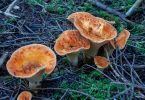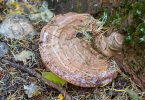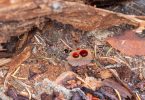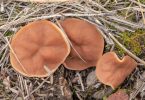My Photo Collection
Assigning a form to an unknown mushroom is the first step in the identification process. I’ve amassed 9821 mushroom photos over 289 dates since 2010. Have I identified them all? No, not even close 🙂 But, I recognize them all by form. By form I mean the look and structure of the fungi fruiting body or mushroom. Line drawings of these forms appear in the beginning of most any mushroom field guide. Just like identifying birds, mushrooms also exhibit a “GISS” (acronym – general impression of size and shape). A red-tailed hawk is distinctly different than a dipper in form. In the case of fungi differing size, shape and reproductive structures (e.g. gills) in some total represent broadly representative forms in which to initially categorize a mushroom. The variables in combination generate a choice of 13 or so representative forms. Assign unknown mushrooms to one of the following forms: gilled, bolete, club, coral, crust, cup, fan, jelly, miscellaneous, morel, puffball, spine and polypore. This first step builds momentum towards identification using further morphology features.
Context
Morphology alone is not sufficient for biological, ecological or taxonomic relationships and even identification. That’s when DNA sequencing is also necessary. Illinois Natural History Survey mycologist Andrew Miller and colleagues created the first comprehensive checklist of North American fungi in 2018 as reported by Diana Yates. They wound up with a list of 44,488 species. Approximately 20,000 on the list are not microscopic and develop mushrooms. Most of these mushrooms are obvious in the environment during spring through fall in temperate zones, possible encounters in your field trips.
Assigning a form to an unknown mushroom will immediately boil down the identification possibilities. Your learning and knowledge curve will gradually improve, frustration minimized. What follows is a bare bones description, representative photograph of the thirteen forms of mushroom I’ve encountered. This post supplements the material of a dedicated mushroom field guide.
Gilled Mushroom
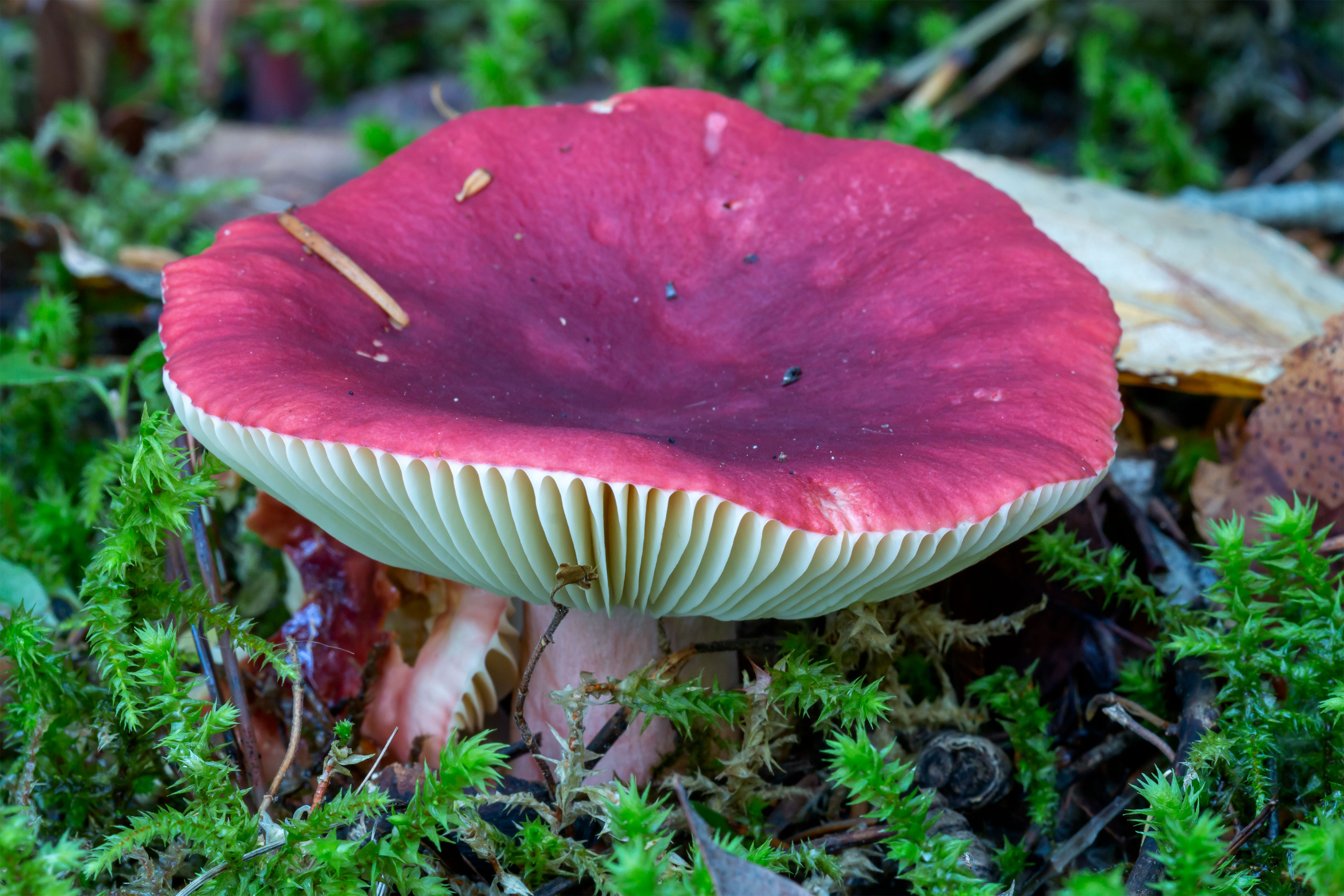
Gilled mushrooms are the form most folks mentally associate as a mushroom. They are numerically the most diverse and abundant form on the landscape. A russula species is pictured. It models the distinct shape of a gilled mushroom: a stem and a cap. Most importantly, the cap has gills on the underside of the cap. Gills serve as the structure for generating spores.
Bolete Mushroom
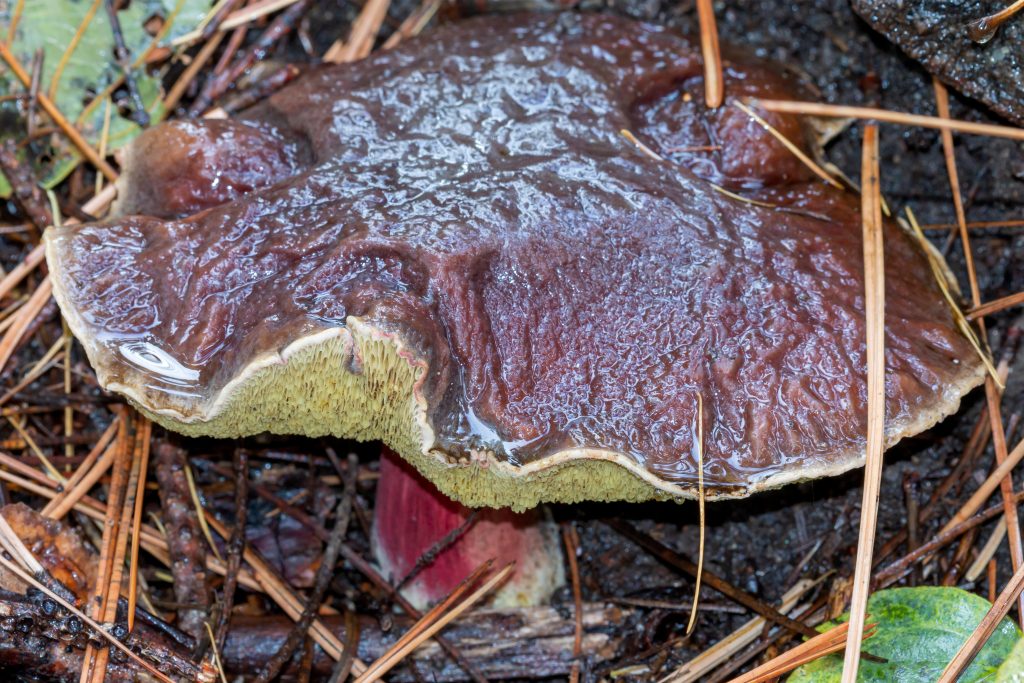
Boletes resemble gilled mushrooms with the gills replaced by a vertical layer of tubes. Review the photo of Zeller’s Bolete above. Note the yellow layer under the brownish purple mushroom cap. It is easy to see the pore openings of the tubes. Yes, the tube layer also is instrumental in producing and releasing spores.
Club Mushroom
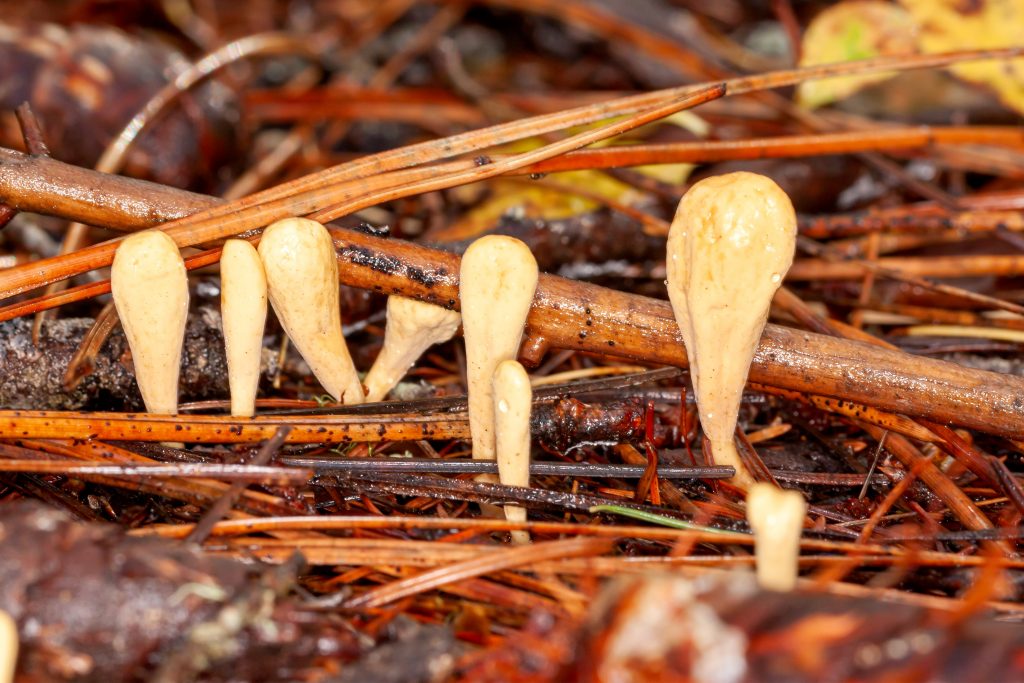
Club fungi look like miniature clubs sticking out of the ground. They grow in groups in pine needle duff. Pictured is a species from the Clavariadelphus genus. This form is a radical departure from the gilled and bolete mushrooms. There is no cap with gills or tubes. The stem surface performs the function of spore production and dispersal. Most club fungi are also small, less than 6 inches in stature.
Coral Mushroom
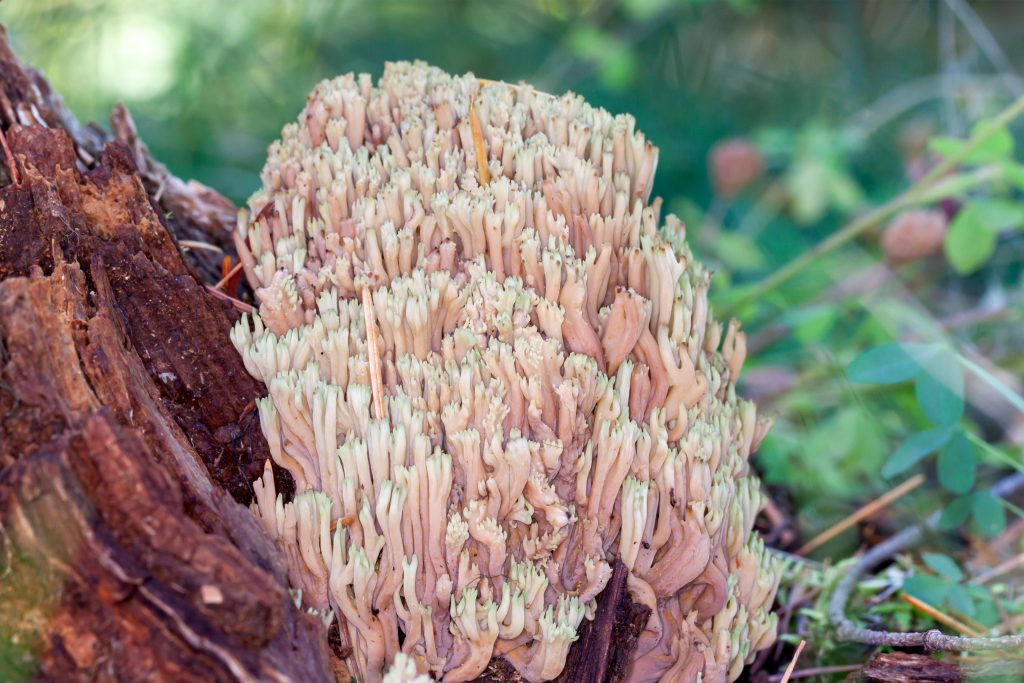
Coral fungi resemble coral found in marine habitat. Like club fungi they have no cap with associated gills or tubes. Usually found growing on wood. Soil frequently covers the wood. The mushroom surface acts as spore producer and as dispersal mechanism. Crowded growth and vertical in nature give off a bulky, not delicate look.
Crust Mushroom
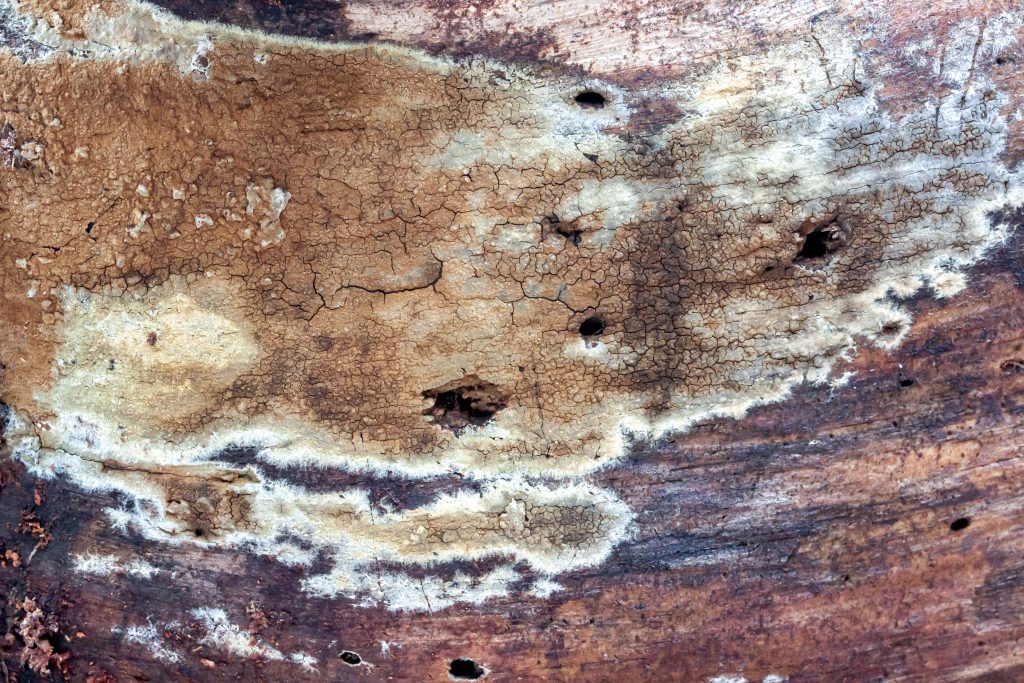
Crust fungi are usually obvious on decaying wood of downed tree trunks. Mainly noticed as a thin colored patch on brown wood. These organisms play important recycling roles in forest systems. The spines or tubes (akin to bolete) produce the spores.
Cup Mushroom
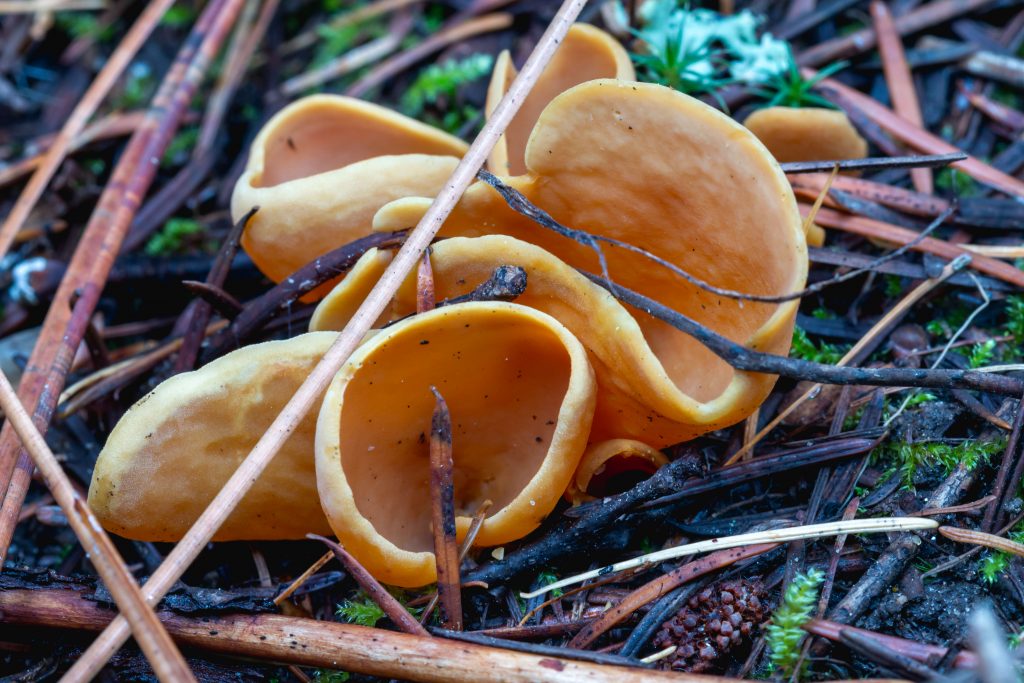
A cup from your kitchen cupboard describes this mushroom. Different species exhibit a spectrum of shallow to deep-welled shape. And the symmetry can be dramatically unequal. The shape can be a part of a maturation process.
Fan Mushroom
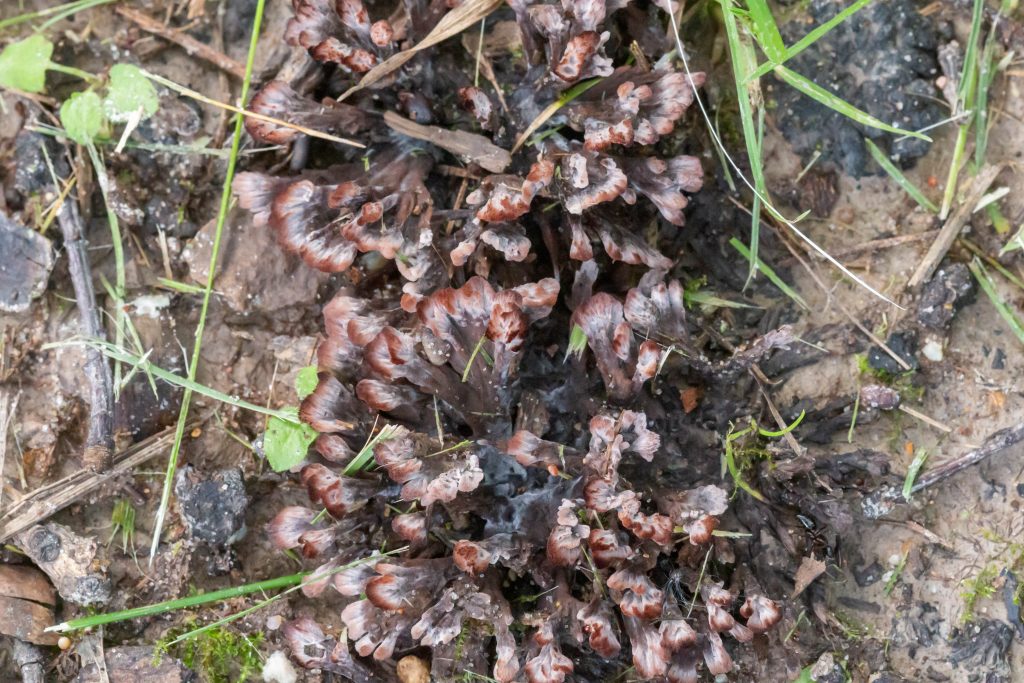
Fan fungi have a growth similar to leaf lettuce. The open branches are flat and can be wide or narrow. Found growing in conifer duff.
Jelly Mushroom
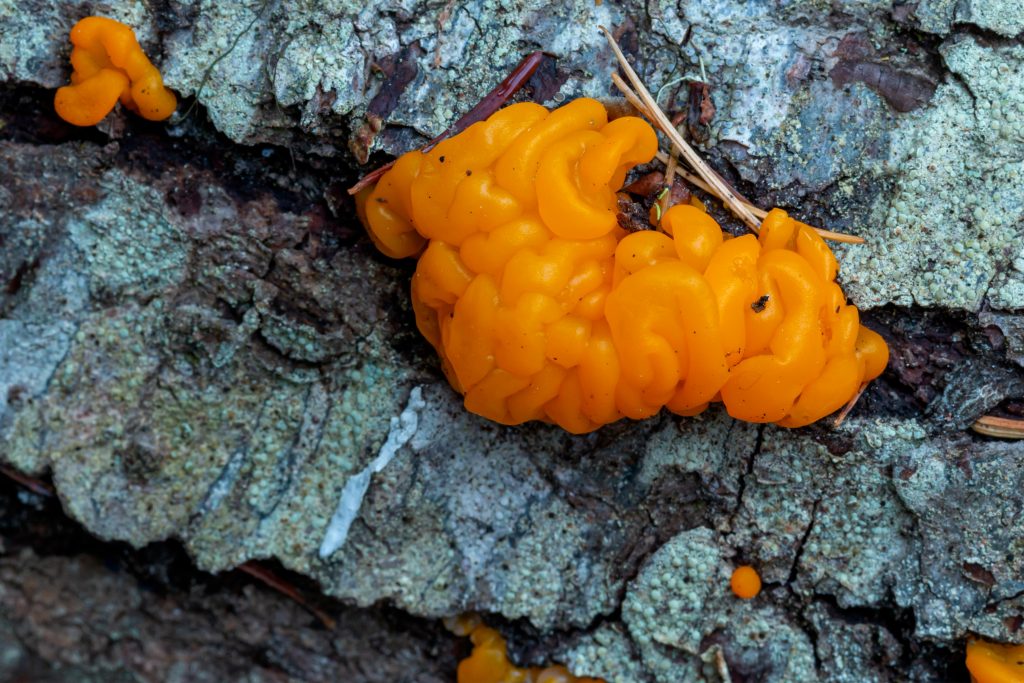
Jelly fungi are easy to identify when hydrated. They appear amorphous, gelatinous, a moist blob at times. The fruiting bodies of different species are vividly colored by one of eight colors. During dry periods these mushrooms simply reduce to a hard-to-detect crust. Look for these organisms on decaying timber.
Miscellaneous Mushroom
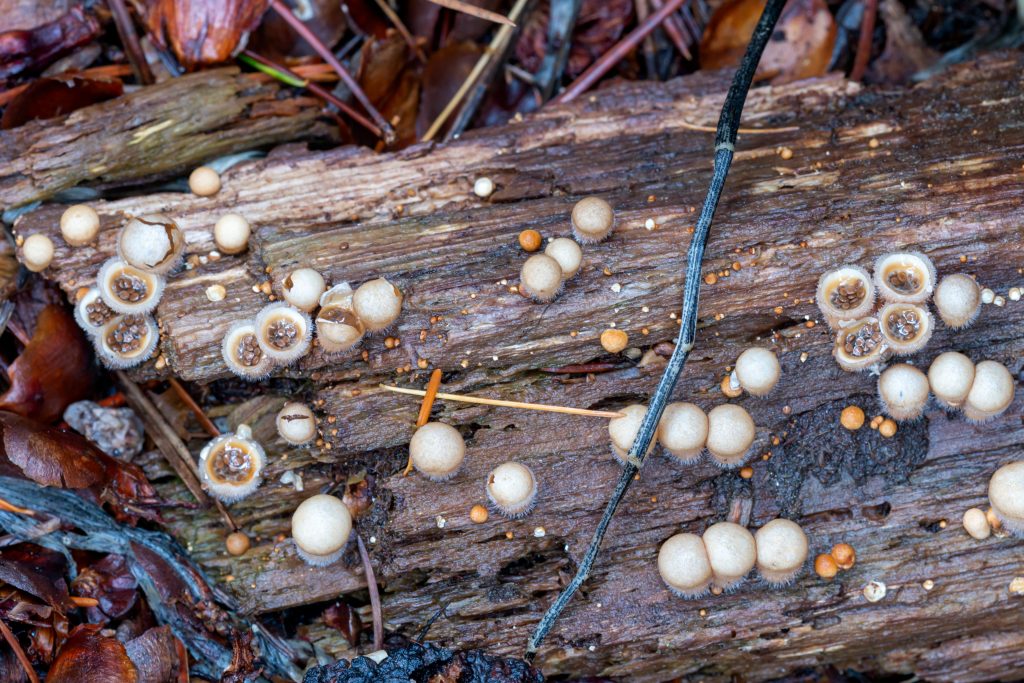
Miscellaneous mushroom is catchall group for several different mushrooms that don’t neatly fit into one of the forms already outlined. The most recognizable fruit body of this category is birds nest fungi. It looks just like a small bird nest with eggs! Look for it on wood (branches, twigs, large and decaying tree trunks) on the forest floor.
Morel Mushroom
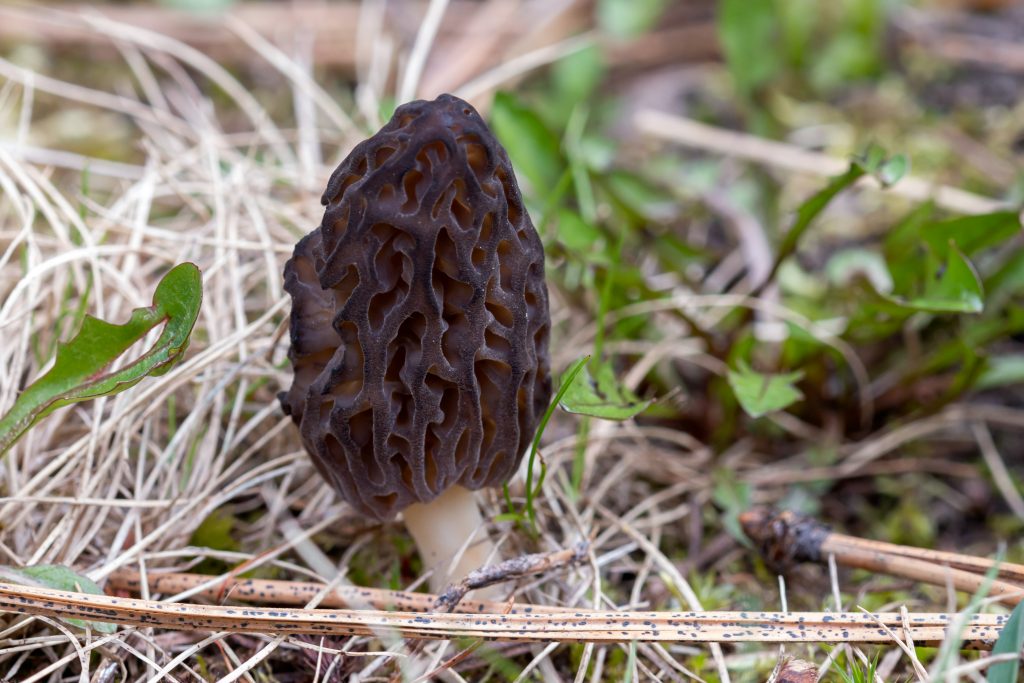
Your main target was likely morel mushroom if you have ever gone out looking for edible mushrooms. This form is distinct. The mushroom consists of a visible stem on which a pitted cylindrical cap rests. Morel mushrooms appear in spring in forested areas impacted by wildfire.
Puffball Mushroom
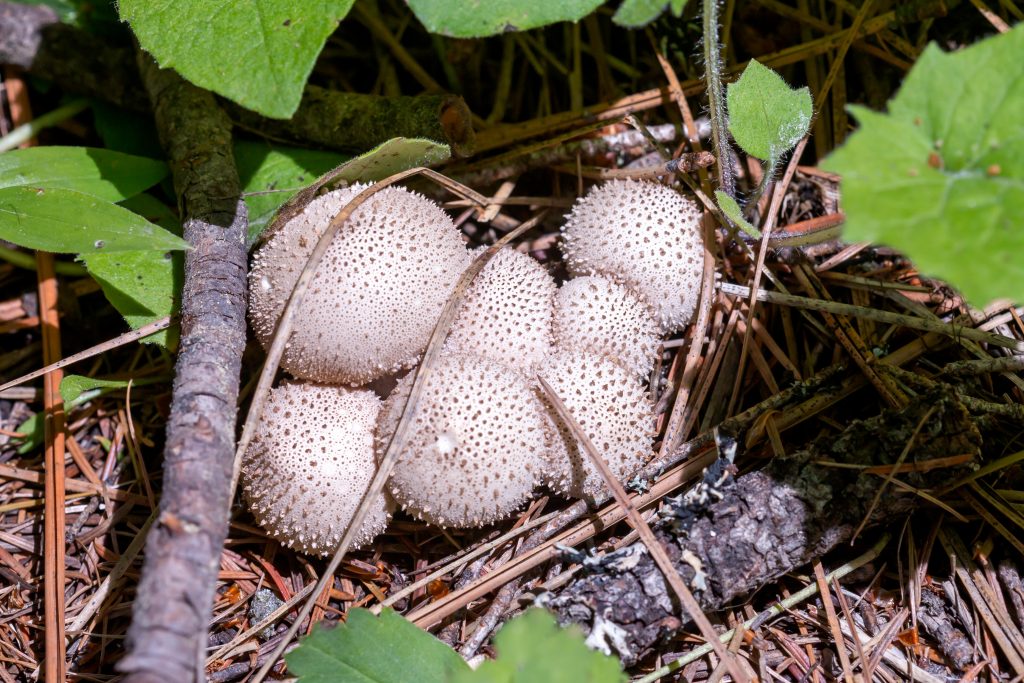
Puffballs are readily identified. Think baseball or warped slightly from this basic configuration. There is much variation in size of species.
Spine Mushroom
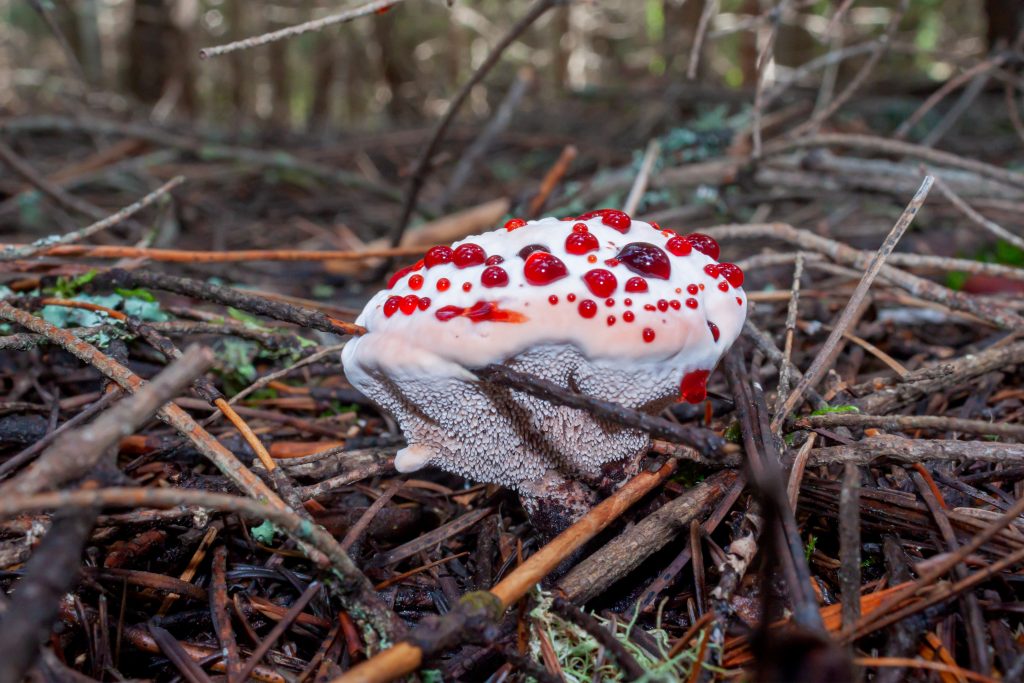
Spine fungi are variable in form. The overlapping feature for all shapes are the presence of spines. Spines serve the purpose of spore production just like gills or tubes of other mushroom forms. The spines are short and inconspicuous, they are not sharp to the touch.
Polypore Mushroom
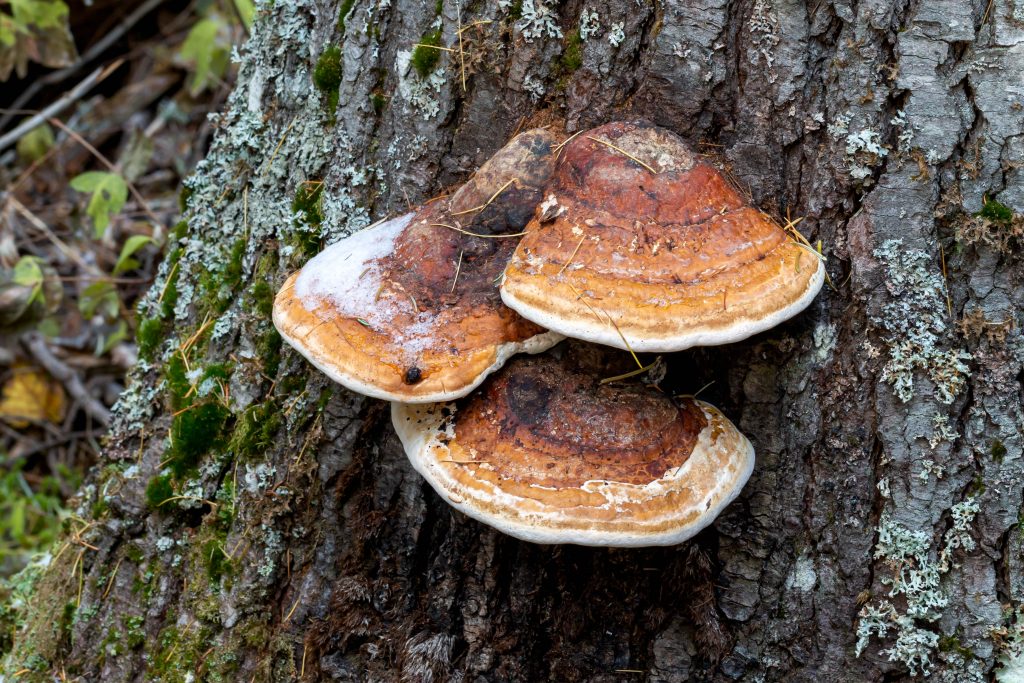
A typical polypore form is shelf-like. However, it is strongly rounded like a frisbee cut in half. This form attaches snugly to a tree trunk without a stem. The tree may be dead or alive. This mushroom form has pores on the underside of the cap much like the tube structure of boletes. Growth persists over winter in temperate areas should you need a mushroom fix during cold weather.


